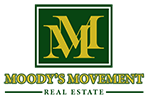Shop confidently for your new home by discovering your purchasing power and mortgage affordability!
Whether you’re buying your first home or moving up to a bigger one, the first question that you’ll need to answer is, “How much can I afford to buy a new house?”
Once you determine a housing budget that you can live with, you’ll be empowered to make the most realistic decisions about which homes to consider. And when you’re ready to buy, your new house can be both a good investment and a source of joy.
Home Affordability Calculator
Determine your monthly payment with our flexible and comprehensive pre-qualification tool.
The mortgage amount is the amount you borrow. It’s the cost of the home minus the down payment.
The interest rate is projected and may change depending on the length of the mortgage and your credit history.
The mortgage period is the amount of time that you take to pay the loan. The most common terms are 15, 20 or 30 years.
Keep in mind: There’s more than just the mortgage
Many other factors need to be considered and some may vary from year to year, including:
Property taxes
Insurance
Homeowners association fees
Maintenance
Utilities
These can change as infrequently as every 10 years or as often as every year and can vary based on the price of your home, the size of the lot and the zoning.
Know your purchasing power
The amount you can borrow and your monthly payment will be contingent on several things, including your income, down payment, credit history, the interest rate, and the lender. But there are some basic rules that can help you make a comfortable mortgage affordability estimate that your lender may accept.
Keep in mind:
Financial experts suggest aiming for a home that costs about 2.5 times the amount of your gross annual salary (salary before taxes), depending on your debt.
If you have credit card debt or other financial obligations, your ability to borrow may be limited.
Continue reading
Strong credit history could give you access to a more competitive interest rate.
To stay in your financial comfort zone, your monthly debt should not exceed 36% of your gross monthly income and your mortgage payment should not exceed 28% of your gross monthly income.
Evaluate your credit
Most mortgage discussions start with a credit score. Any lender will want a complete picture of your finances; it will tell them how likely you are to repay the money you borrow. Several factors are used to calculate your score, including payment history, amounts owed, length of credit history and types of credit used.
A great place to start verifying how much house you can afford is by checking your credit report. You’re entitled to one free copy every year from each of the three major credit reporting agencies, Experian, Equifax, and Transunion. Access them by visiting Annualcreditreport.com–it’s the only site authorized by the US Government. Your credit score is also available through numerous institutions and lenders, often free of charge.
If you’re concerned that your score is not high enough, there are two steps you can take to help raise it, although it does take time:
Pay your bills on time and, if possible, pay more than the minimum on any credit card debt. Showing that you can manage your debt will help increase your credit score.
Correct any errors on your credit report. Look for outdated information, incorrect payment status, and any problems because of identity theft. If you find any issues, contact the reporting agency directly to correct them.
This is also a good time to consider your immediate financial future. Is your employment situation stable? Will you need a new car? Do you foresee a friend or family member needing financial help? Do you plan to go back to school? The bank may not consider these things when deciding to give you a loan, but they will possibly contribute to potential financial stress and may hinder your ability to pay your mortgage.
Getting a mortgage pre-approval is the best, first step to take when buying a home.
Explore the 5 most common types of mortgages
Fixed-rate mortgage
Adjustable-rate mortgage (ARM)
FHA Insured loan
Balloon mortgage
Interest-only loans
The most common mortgage keeps the interest rate the same over the entire term, usually 15, 20 or, most often, 30 years. If interest rates drop, you may be able to refinance at a lower rate.
Reduce your down payment with Private Mortgage Insurance (PMI)
If your down payment is less than 20%, lenders will require Private Mortgage Insurance (PMI). It protects lenders if a loan is not repaid and a house goes into foreclosure. The fees vary, depending on the size of the loan, but it can cost between .5% and 1% of the mortgage on a yearly basis.
Your lender can provide complete details on how your payment history, accrued equity and increases in your home’s
